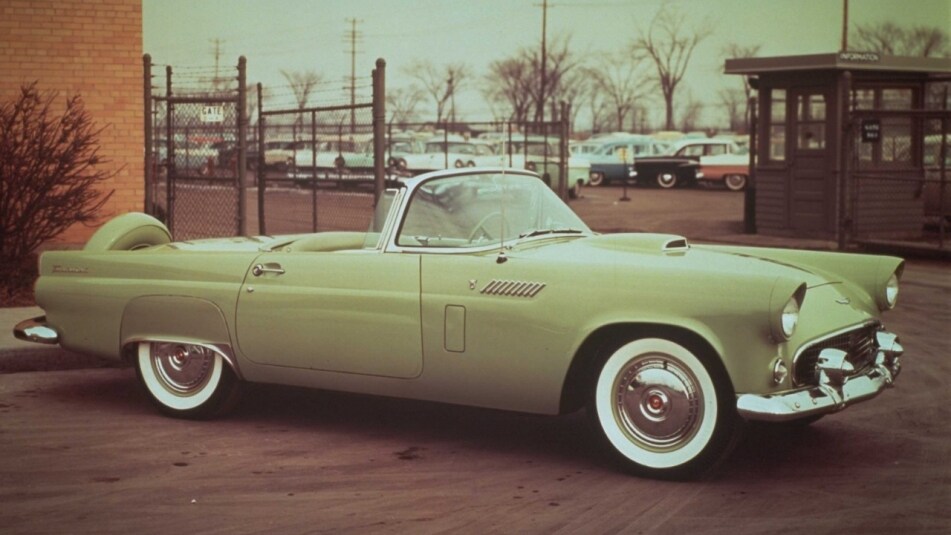The Ford Thunderbird was the brainchild of two men—George Walker and Louis D. Crusoe. The car was born from the idea that Ford Motor Company should have a sportier vehicle as part of their automobile line. This idea was pursued by the company who decided to pursue a “true Ford sports car” for their 1955 model year.
The initial guidelines called for a two-passenger, canvas-topped open car that would make maximum use of standard production components. The design objectives included a weight of 2,525 pounds, an Interceptor V-8 engine, a balanced weight distribution, acceleration better than the competition, and a top speed of more than 100 miles per hour. The new Ford sports car also was to retain Ford product characteristics and identification to the extent necessary for a ready association with the standard production car.
While the production of the car was nearing completion, Ford had a problem—they lacked a name for their new sports car. 5,000 names for the vehicle were suggested including Beaver, Detroiter, Runabout, and Savile. These names were unimpressive to the team working on the sports car. Crusoe offered a $250 suit to anyone who could do better. Ford stylist Alden Giberson stepped up to the challenged and recommended the name that the team would go with—Thunderbird.
The first appearance of the Thunderbird was February 20, 1954 at Detroit’s first post-war auto show. The vehicle featured a more personal than sports car concept with its two-seater feature and build that would allow it to carve its own niche in the existing vehicle market. The first Thunderbird came off the line at the Dearborn Assembly Plant in September of that same year. With a price tag of between $2,695 and $4,000 the vehicle was an immediate hit, with buyers describing the car as a “morale builder that is real fun and sport to drive.”
The vehicle would evolve throughout its production time. The changes included increased safety features, adding more engine options, Dial-O-Matic power seats, a radio that automatically adjusted the volume in proportion to the speed of the engine, adding the option of four seats, increasing interior space within the vehicle, a flat line roof, a rear window, and many other features.
The vehicle was also adapted into a special racing package that was used in motorsports. The Thunderbird appeared in NASCAR in 1959 and won six races in the top division that year. The 1982 restyled Thunderbird arrived on the NASCAR scene in that year, and since then won 150 races in NASCAR’s top division, including four wins at the Daytona 500. Additionally, pieces of the Thunderbird were tweaked and used in other performance projects for Ford Motorsports.
The design of the Thunderbird continued to be fine-tuned and evolved over the decades it was on the market. The Thunderbird ceased production in the mid-1990s, but a Heritage Edition was created in the early 2000s. The vehicle celebrated its 50th anniversary in 2005 despite not being fully produced for fifty years. In that same year, Ford Motor Company announced that the Thunderbird would be discontinued and the nameplate put on hiatus.
Yet the vehicle left a legacy for its speed, agility and then later its luxury and comfort. The Thunderbird or T-Bird was referenced in pop culture regularly showing the cultural significance of the vehicle. The vehicle showed Ford Motor Company’s ability to carve out its own nice and build something unique.

